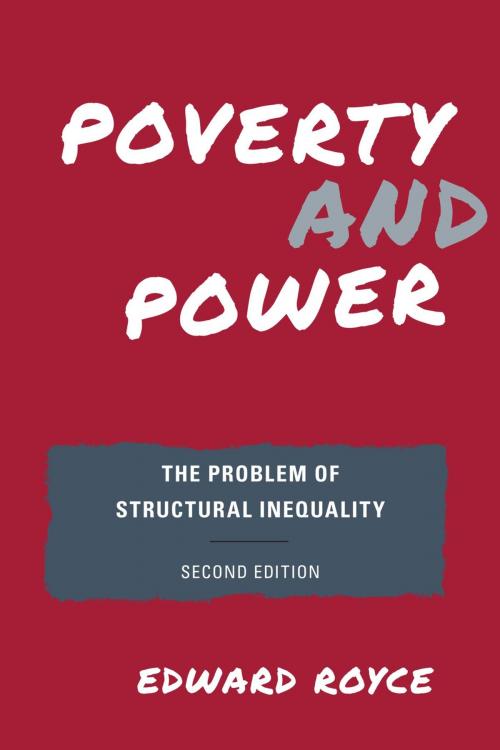Poverty and Power
The Problem of Structural Inequality
Nonfiction, Social & Cultural Studies, Social Science, Social Work, Sociology| Author: | Edward Royce | ISBN: | 9781442238091 |
| Publisher: | Rowman & Littlefield Publishers | Publication: | January 21, 2015 |
| Imprint: | Rowman & Littlefield Publishers | Language: | English |
| Author: | Edward Royce |
| ISBN: | 9781442238091 |
| Publisher: | Rowman & Littlefield Publishers |
| Publication: | January 21, 2015 |
| Imprint: | Rowman & Littlefield Publishers |
| Language: | English |
Poverty and Power asserts that American poverty is a structural problem resulting from failings in our social system rather than individual failings of the poor. Contrary to the popular belief that poverty results from individual deficiencies—that poor people lack intelligence, determination, or skills—author Edward Royce introduces students to the very real structural issues that stack the balance of power in the United States.
The book introduces four systems that contribute to inequality in the U.S.—economic, political, cultural, and structural—then discusses ten institutional problems that make life difficult for the poor and contribute to the persistence of poverty. Throughout the book, the author compares individualistic and structural approaches to poverty to assess strengths and limitations of each view.
The second edition of this provocative book has been revised throughout with new statistical information, as well as analysis of the recent recession, the Obama presidency, increasing political polarization, the rise of the Tea Party and appearance of the Occupy Movement, new anti-poverty movements, and more.
Poverty and Power asserts that American poverty is a structural problem resulting from failings in our social system rather than individual failings of the poor. Contrary to the popular belief that poverty results from individual deficiencies—that poor people lack intelligence, determination, or skills—author Edward Royce introduces students to the very real structural issues that stack the balance of power in the United States.
The book introduces four systems that contribute to inequality in the U.S.—economic, political, cultural, and structural—then discusses ten institutional problems that make life difficult for the poor and contribute to the persistence of poverty. Throughout the book, the author compares individualistic and structural approaches to poverty to assess strengths and limitations of each view.
The second edition of this provocative book has been revised throughout with new statistical information, as well as analysis of the recent recession, the Obama presidency, increasing political polarization, the rise of the Tea Party and appearance of the Occupy Movement, new anti-poverty movements, and more.















